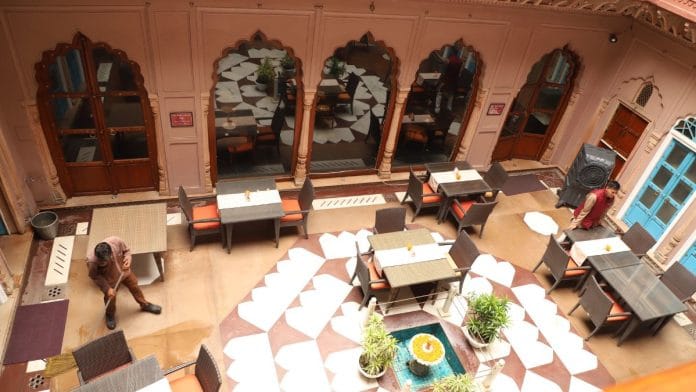New Delhi: The dark, narrow lane in Shahjahanabad with garbage piling in the corners gives way to a clean, clear stretch where the Golden Haveli, with its shiny brass doors, gleams under the morning sun. Restored in 2023, the 150-year-old structure stands in stark contrast to the dull and crumbling havelis in the heart of Old Delhi.
Barely a few hundred metres away is its 200-year-old ‘sister’ Haveli Dharampura. Built during the reign of Mughal emperor Shahjahan, it is already a popular destination for tourists. In their new avatar, the two havelis are boutique hotels that serve to remind visitors of a Delhi long gone. They embody former Rajya Sabha member Vijay Goel’s dream to create the ‘Taj Mahal of Delhi’.
Goel isn’t the only person attempting to capture a moment in time. In the last decade, at least five havelis have been restored by their owners. It’s a labour of love that needs deep pockets, patience, and a passion for the past. When he started work on restoring Haveli Dharampura, Goel thought it would be done within six months. Instead, it took six years. Some, like the two sister havelis, are luxury hotels; others like the Kathika Cultural Centre—an equally old haveli—have become hubs for dance and poetry recitals. Haveli Sharif Manzil, which stands out in its simplicity, is a family home.
“The idea was to get the glory back to Old Delhi, to show people how it could be done and to possibly inspire more people. The fate of these havelis will probably inspire the fate of 100 more havelis in Old Delhi,” said the former MP’s daughter, Vidyun Goel.

These extensive projects have reignited people’s interest in Old Delhi. They can now experience the ornate buildings they had so far only witnessed in Sanjay Leela Bhansali movies. But equitable accessibility is the key. If the objective is to foster a cultural identity among people, then these havelis, living repositories of art and tradition, should be open to everyone, according to Abu Sufiyan, 30, founder of Old Delhi impact community ‘Purani Dilli Walo Ki Baatein’.
“Right now, people are not even allowed to enter these places and entrance is only based on reservations. If you are calling it a cultural initiative where you are trying to preserve the heritage, then at least certain sections should be publicly accessible and the rest of the areas should be restricted,” he stressed. That said, restoring these Mughal-era manors is an expensive and lengthy process.
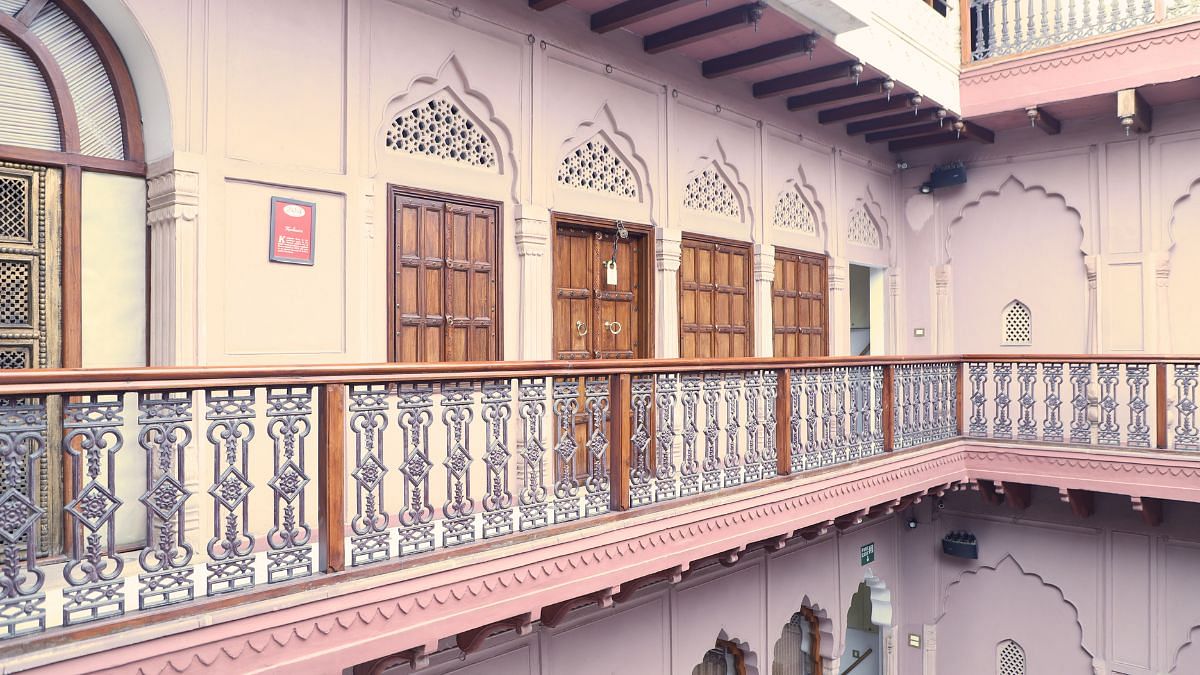
Moreover, preservation efforts should extend beyond just famous havelis that can potentially be converted into hotels or cultural centres, said historian, author and conservationist Swapna Liddle.
“We even need to think of ordinary homes and chai ki dukaans (tea stalls).”
Also read: Hindu havelis near Dhaka tell a story – of zamindars, oppression, Partition
Bringing back the glory
Haveli Dharampura’s website describes it as “a serene hideaway in the heart of Old Delhi,” a “time capsule from the Mughal era.” However, restoring the haveli into the coveted boutique hotel that it is today was no less than a tightrope walk for the Goel family. Its worn-down doors, for one, had to be sent to places like Shekhawati in Rajasthan, and Moradabad and Varanasi in Uttar Pradesh, to be restored to their former glory.
Today, Haveli Dharampura has 14 rooms, and the Golden Haveli has 12— all named after the different entry gates of Shahjahanabad. Awarded the UNESCO Asia Pacific Award for Cultural and Heritage Restoration in 2017, Haveli Dharampura has hosted people from over 80 countries ever since it opened its gates in 2016. It has housed Hollywood and Bollywood celebrities as well as heads of different states, bringing, in Vidyun Goel’s words, “the glory back to Old Delhi.”

Moreover, with their vibrant frescoes, intricate woodwork and mysterious jharokhas, the havelis have breathed new life into the area. Sandwiched between the Jama Masjid and the Red Fort, their opening, according to Vidyun, sparked a local economic revival of sorts. It is evident in the shops that have sprouted in their vicinity, she said.
The unique experiences they offer ensure that footfall remains consistent. From kathak, flute and sitar evenings to kite flying events, there’s a lot for visitors to explore. They can also enjoy the expensive tasting menu, which starts at Rs 4,000 per person, and pay Rs 18,000 per night if they wish to stay.
But this revival project has just begun.
According to Vidyun, only ‘tangible heritage’ has been restored so far—the buildings and the lanes, that is.
“The intangible heritage of this place also needs to be restored. It includes art, culture, and food.”
Also read: ‘Hell penetrated my heaven’—Old Delhi havelis crumbling, Shahjahanabad now a commercial slum
A renaissance project
In the heart of old Delhi’s Imli Mohalla, Kathika Cultural Centre is doing more than just revive a 200-year-old haveli. Here, children rehearse kathak, their ghungroo-laden feet tapping to the beats of the tabla and sitar. A twenty-something teacher dressed in crisp
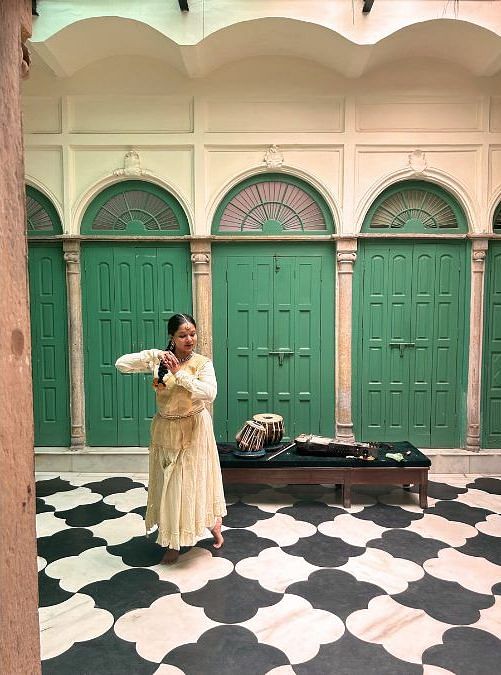
white guides their steps, filling the courtyard with the sounds of “Taa Thai Taa Thai”. This ‘renaissance project’ is bringing back the tradition of mehfils—gatherings that celebrate classical music, dance, and poetry.
When Kathika Cultural Centre’s founder, 62-year-old entrepreneur Atul Khanna, read an article about the deteriorating condition of havelis in Old Delhi, he instantly realised it was time to revive at least one for future generations. And after seven years of hard work, he managed to revamp not one, but two.
“When I saw this haveli [Kathika], its condition was so bad that it was falling apart. A wave of guilt spread through me. I felt obliged to revive this small part of Shahjahanabad, otherwise this chapter would have been over,” said Khanna as he cheered for the children.
These crumbling havelis are reminiscent of the grandeur of Shahjahanabad, which metamorphosed into the chaotic purani dilli of today. As the walled city trudged toward modernisation, these homes were abandoned and fell into disrepair.
People like Khanna, though, became the saviours of this dying heritage. Their long-drawn, painstaking projects turned dilapidated homes into boutique hotels, homestays, and cultural centres.
“We have lost a lot of heritage but there is still so much left. We just need to showcase our projects in a way that they inspire others,” said Khanna, adding that there is still hope. “Iss baag ko dobara zinda kar sakte hain (we can still revive this garden).”
Old Delhi’s haveli culture can be traced back to Mughal emperor Shahjahan’s reign, when he granted land near the Red Fort to nobles and merchants. Kathika, built around 1850-1860 according to the archives available with Khanna, was one of the thousands of stately homes built during this era. The havelis of Imli Mohalla— which was then heavily populated by Kashmiri pandits—show both Mughal and British influence in their architecture. Kathika Cultural Centre is a fusion of two buildings—Neem ki Haveli, named after a neem tree that still stands in its courtyard, and Kathika Haveli. Kathika is where Khanna houses artefacts he collected from all over India.
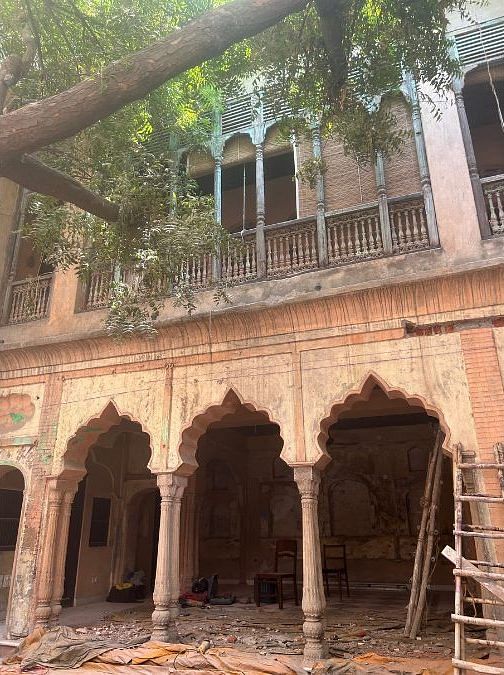
The entrepreneur, who belongs to Old Delhi, faced many roadblocks in acquiring and revamping these havelis. This included tracking down the latest owners from among a sea of old ones, and resistance to his novel idea of turning Kathika into an art and cultural centre. This resulted in conflict with residents and even a court case against him. While Kathika Cultural Centre is now a reality, Neem ki Haveli’s restoration is still in progress.
Community members have now accepted the adaptive reuse Khanna stands for. “Either you make them back into residences or take a step further and create hotels or restaurants, museums, and art galleries. The idea is to just use the space to bring back life to it,” Khanna said.
He has made sure to keep the elements of the haveli alive for people to witness. Upon entering, they see a grand aangan (verandah), the hub of all activity in old homes. Next to this is the baithak (sitting room), where community members would gather to talk and watch Sunday movies.
Then comes the chatt (rooftop). This is where, Khanna elaborated, women would dry their papad, kids would fly kites, families would sleep together on their cots and young people would often fall in love.
However, in today’s version of this haveli, book reading, opera performances, painting sessions, mushaira (poetic symposium) and dastangoi (storytelling) take place. These events most recently included the birthday celebrations of Mexican painter Frida Kahlo. More than 80 women showed up in attire inspired by Kahlo’s and made masks together.
“History cannot be changed. But when you talk about art and culture you don’t really think about any religion. The ganga-jamuni tehzeeb [syncretic Hindu-Muslim culture] can be found in areas like these. This is where different worlds come together. Art and culture have no religion and it is beyond all differences,” said Khanna, adding that Kathika has become “a museum of short stories”.
Also read: An old Delhi heritage walk that’s not about Jama Masjid, Red Fort. It tells queer histories
Asserting identity
Haveli Sharif Manzil, built in 1719, is one of the oldest structures in Balli Maran. Famous for its rich political and cultural history, it has attracted many people—particularly researchers and scholars—from different parts of the world. The owners, who have continued to live in it, have always welcomed guests wholeheartedly.
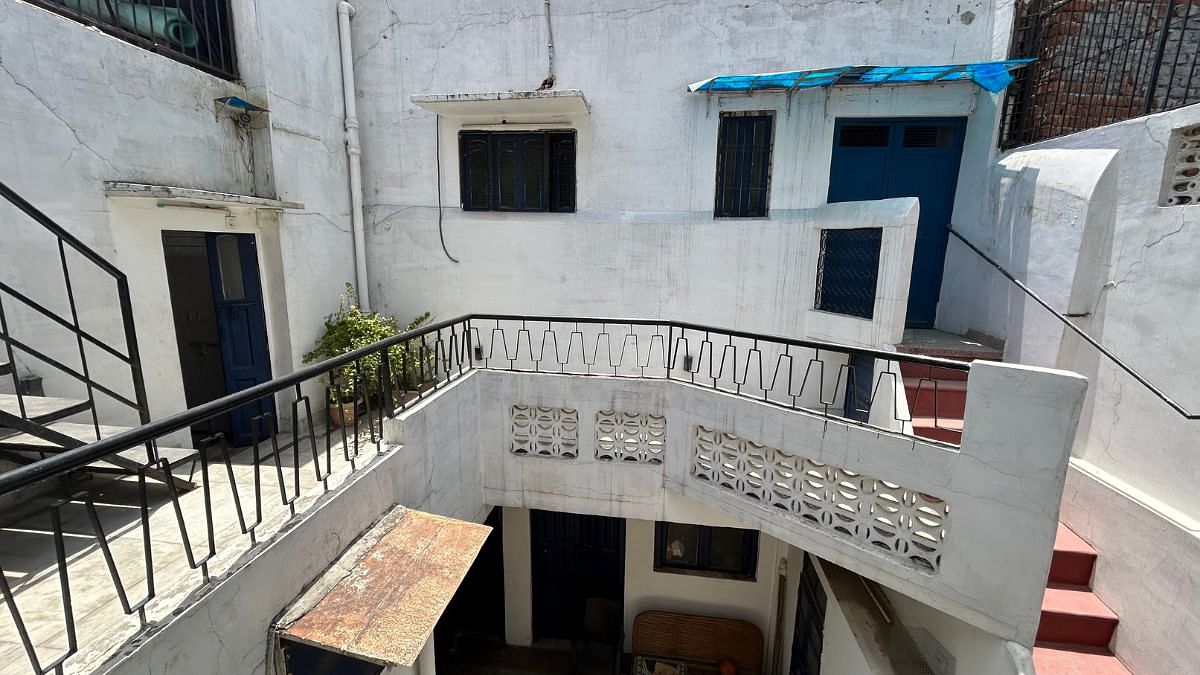
It was only in 2017, however, that Muneeb Khan, 45, the haveli’s fifth-generation resident, realised that he could transform it into a homestay. Khan, a lawyer, did not want to alter its aesthetics. He only made minor changes such as renovating the washrooms and putting a fresh coat of paint here and there.
Sharif Manzil has a rich historical legacy. Hakeem Sharif Khan was the noble physician of Aurangzeb, sent to evaluate the living conditions in Delhi by the Mughal emperor. He later settled in Balli Maran, building the haveli that has now become a homestay.
“This haveli is where the non-cooperation movement was signed. Great politicians like Gandhi and Bhagat Singh have stayed in this haveli,” said Khan, emphasising the importance of his ancestral home.
So what pushed him to convert it into a homestay? The narrative that Muslims are “uneducated”, said Khan.
“It became absolutely crucial for me to tell people this is how we Muslims are and this is how our culture is. In Indian culture, people talk about Vasudhaiva Kutumbakam (the world is one family) and in our religion also we are very welcoming,” he added. “I wanted to tell people that we are nationalists.”
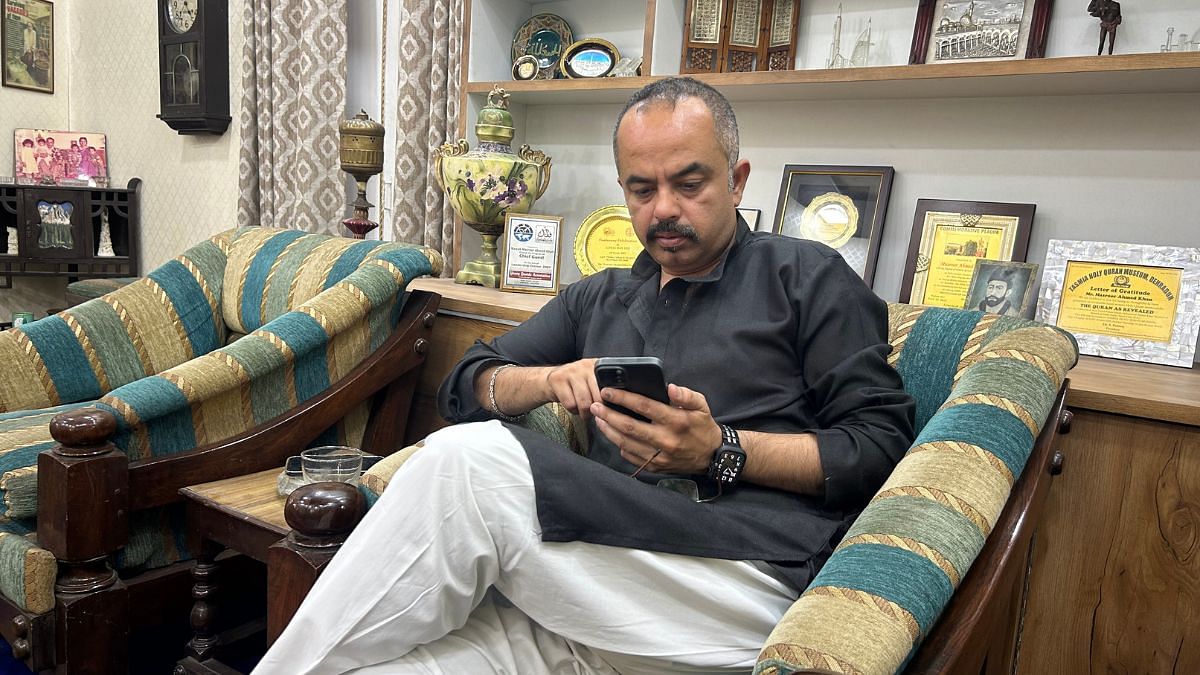
Sharif Manzil today has two small rooms and one deluxe room. The prices are minimal—Rs 1,500 for a small room and Rs 2,500 for a deluxe one. On top of that, the family provides fresh home-cooked meals to their guests. “The purpose was to make the place accessible for even those who could not afford an expensive room,” said Khan.
His guests are only those intrigued by Old Delhi’s culture. Those who want to simply experience kite flying, and sit around a bonfire in the winter. According to Khan, Old Delhi
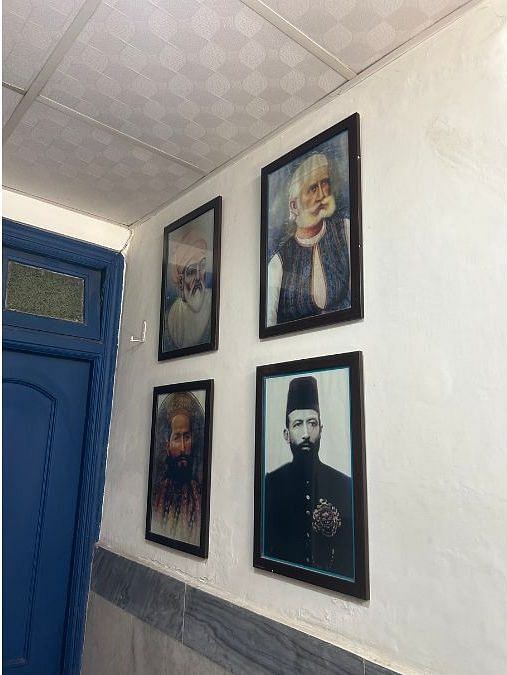
is currently going through a phase of renaissance, with the new generation realising the potency of their culture. “They had drifted to Western culture and now coming back to their roots.”
But according to Abu Sufiyan, Old Delhi culture has been dying a slow death. “The major reason is that the havelis began breaking apart,” he said, adding that, instead of focusing on renovating them, residents and the Delhi Development Authority began tearing them down to build apartments and godowns.
Encroachment and continuous construction activities have made the situation worse. People can no longer even park their vehicles. “In case there is a new building coming up, then the encroachment on the roads should be monitored or administered,” said Sufiyan.
Monuments alone cannot preserve the culture of the city, added Sufiyan. The havelis of Old Delhi embody generations of stories. “If you want to save a city’s culture, then you need to save the lifestyle of the people; these havelis make a major contribution to that.”
While cultural centres and hotels are helping preserve a dying cultural legacy, the government must strive to make Old Delhi more liveable for original residents, said Sufiyan.
“Purani Dilli is an orphaned child who has taken care of everyone, but no one does anything for it. The government needs to take remarkable steps to revive it.”
(Edited by Zoya Bhatti)



